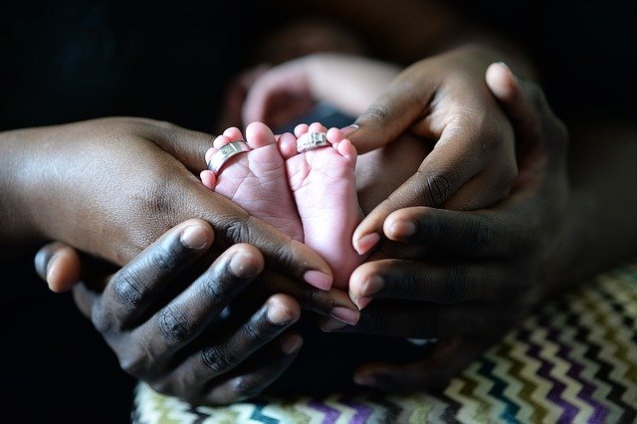Data from the Births and Deaths Registry of Ghana indicates that for every recorded death in 2022, 13 births ensued. This was indicated in the 2022 Statistical reports on births and deaths registration.
According to the reports, "In 2022, Ghana recorded a total of 50,992 registered deaths," whereas "a total of 677,140 births were officially registered and documented."
This translates to a death to birth ratio of 1:13 indicating that the number of births registered are 13 times the number of deaths recorded.
Details of the report showed a growing trend in death to birth ratio over the years.
The 2022 report indicated a significant gender disparity in mortality rates, with men comprising 60% of total recorded deaths. This observation is juxtaposed against a more balanced gender distribution in births, where men accounted for 50.8% of registrations. This discrepancy suggests a potential long-term demographic shift, as the male population may gradually decrease over time due to a mortality rate outpacing the birth rate.
Furthermore, a geographical analysis reveals notable regional variations in both births and deaths. Approximately 46% of total registered births were concentrated in the Ashanti, Greater Accra, and Northern regions. Conversely, more than half of registered deaths occurred in just three regions: Greater Accra, Ashanti, and Eastern. This geographic disparity in mortality rates could be indicative of varying healthcare access, socio-economic factors, or other regional influences impacting population dynamics.
The 2022 report underscored a significant gender disparity in mortality rates, with men comprising 60% of total recorded deaths. This observation is juxtaposed against a more balanced gender distribution in births, where men accounted for 50.8% of registrations. This discrepancy suggests a potential long-term demographic shift, as the male population may gradually decrease over time due to a mortality rate outpacing the birth rate.
Furthermore, a geographical analysis reveals notable regional variations in both births and deaths. Approximately 46% of total registered births were concentrated in the Ashanti, Greater Accra, and Northern regions. Conversely, more than half of registered deaths occurred in just three regions: Greater Accra, Ashanti, and Eastern. This geographic disparity in mortality rates could be indicative of varying healthcare access, socio-economic factors, or other regional influences impacting population dynamics.
Latest Stories
-
Michael Blackson and fiancée Rada Darling welcome son ‘Lil Mikey’
5 minutes -
Ablekuma North Collation: NDC is frustrating the process – Justin Kodua
8 minutes -
Justin Kodua explains why NPP is holding early presidential primary for 2028 election
13 minutes -
Adutwum declares intent to run for NPP 2028 flagbearership race
20 minutes -
Shirley Frimpong-Manso bemoans Ghana’s hype for Tyler Perry’s ‘Straw’
22 minutes -
Two arraigned for alleged illegal gold trade
32 minutes -
PUSAG condemns withholding of National Service PIN Codes, demands urgent redress for affected students
35 minutes -
NIA staff to receive 20% salary arrears from January 2025
37 minutes -
Court dismisses Ofori-Atta’s application seeking to prevent OSP from declaring him wanted
43 minutes -
NPP justifies early flagbearer election, says Ghana needs a strong opposition leader now
43 minutes -
Ghana reaffirms leadership and commitment to ocean protection at 30×30 Ocean Reception during UN Ocean Conference
45 minutes -
Enrolment in faith-based schools is voluntary, not a rights violation – Justice Amaleboba
49 minutes -
Trade Minister calls for more strategic Chinese investment in Ghana
58 minutes -
Ghana needs to go back to Gen. Acheampong’s polices – Prof. Agyeman-Duah
1 hour -
IFC, Societe Generale enter into $40m partnership to boost cocoa sector
1 hour

